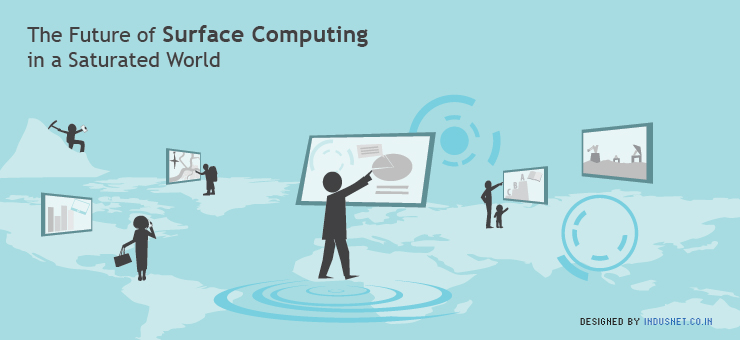
While touchscreen technology has existed for quite some time and it no longer raises an eyebrow even in emerging countries, it is quite interesting to wonder what the future holds for it. Surface computing refers to the use of a specialized computer GUI where traditional GUI is replaced by intuitive objects. These intuitive objects may take the form of gestures and a touch sensitive screen, instead of a keyboard and mouse. In fact, it is safe to say that gesture recognition and touchscreen technology are more ‘natural’ than using a keyboard and mouse or other forms of input. Surface computers are used almost everywhere.
What Surface Computing Is All About
Tablets, smartphones, laptops and even desktops come with touch displays and it certainly is what the present is all about. Even the touch display panels at hospitals, public places, ATM machines and at airports represent this brand of computing. However, it is understandable to wonder what the future of surface computing is going to be. Surface computers are often installed in libraries and stores too, where catalogues can be easily accessed and referred to.
Moreover, the advent of a mobile culture has sort of changed the way we understand touch displays. Instead of bulky surface computers like the previous Microsoft Surface, we often think in terms of tablets. The future then, certainly belongs to a breed of tablets or tablet-like devices which connect to the internet, and allow you to interact with the help of gestures. Gesture recognition may also be coupled with augmented reality, which sort of creates a real world environment with the help of position, GPS, sound, video and graphics data.
Importance of Augmented Reality and GPS
We believe, the future will be a combination of touchscreen technology, gesture recognition, augmented reality and a more human-brain like computing that mimics all the 5 sense organs of our body. In fact, this may result in commercial products that imbibe mediated reality. This refers to the doctrine that reality can be either augmented or diminished with the help of a computer. That is precisely what the next couple of years will hold for us. There will be more mobile applications that will be sensitive to GPS and augmented reality.
While NFC is a non starter particularly because it is not popular even after several years of existence, augmented reality and using GPS along with gesture recognition will change surface computing. Certainly, we are not going to see something that we have never seen before. Newer products will be more polished, more sophisticated variants of existing products and will help us to access information in a frictionless environment.
What Future Gadgets and Computers Are Going to Be Like
People have begun to take technology for granted. It is no longer possible to amuse people with newer technologies, features and specifications. The design element will always be important, but there shall be less focus on marketing technologies that are already known. Unless there is something revolutionary, the focus will shift to designing great products, and companies will become more product centric than price and market centric.
This will leave us with tablets, smartphones and computers which will have to be redesigned in a way that reduces ‘friction’. Introducing cloud services, employing gesture and touch technology where possible and using augmented reality including GPS more often will continue to be popular in the coming years. Surface computing is not dead, but right now we are certainly on a plateau.
Compartmentalizing the Present and the Future Is Unnecessary
It would be unnecessary and unrealistic to compartmentalize present and future. The reality is more blurred and probably the differentiation between the present and the future is just not required anymore. The focus for product designers, app developers and manufacturing companies should be on creating product centric models which are polished, rethought and reimaged from existing products.
Until we actually come across a technology that will change the world all over again (like Internet did), the future is going to be more or less similar to the present, only simpler and less complex. It certainly would be interesting to know what products will be launched in the next couple of years. Our belief is, similar products that are better designed than the current ones shall be released and marketed to a global audience.